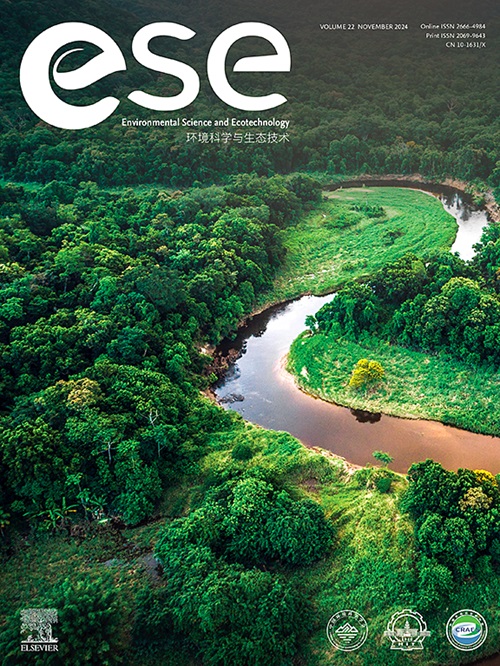Global mismatch between ecosystem service supply and demand driven by climate change and human activity
IF 14.3
1区 环境科学与生态学
Q1 ENVIRONMENTAL SCIENCES
引用次数: 0
Abstract
Assessing the balance between ecosystem service supply and demand (ESSD) relationship and identifying its driving factors is essential for addressing ecosystem degradation. While previous local-scale studies have highlighted climate change and human activities as critical influences, their roles at a global scale remain poorly understood. Here, we analyze the global dynamics of supply–demand relationships for four key ecosystem services—food production, carbon sequestration, soil conservation, and water yield—over the period 2000–2020. We find that ESSD relationships generally exhibit spatially high supply-low demand and quantitatively surplus characteristics. Climate change and human activity influence ESSD relationships in dual-directional pathways. Specifically, they positively affect food production and soil conservation in 80.69 % and 72.50 % of global regions respectively; while negatively influencing carbon sequestration and water yield in 76.74 % and 62.44 % of global regions respectively. Human activity primarily shapes the ESSD relationships for food production and carbon sequestration, with mean contribution rates of 66.54 % and 60.80 % respectively; whereas climate change exerts greater control over soil conservation and water yield, with mean contribution rates of 54.62 % and 55.41 % respectively. Our findings clarify the direction (positive or negative), mode (individual or combined), contribution rates, and geographic distribution of these impacts. This research closes a critical gap in understanding global ESSD relationships and provides essential insights to inform sustainable ecosystem management from local to global scales.

气候变化和人类活动导致的全球生态系统服务供需不匹配
评估生态系统服务供需平衡关系并确定其驱动因素是解决生态系统退化问题的关键。虽然以前的局地尺度研究强调了气候变化和人类活动的关键影响,但它们在全球尺度上的作用仍然知之甚少。本文分析了2000-2020年期间四种关键生态系统服务(粮食生产、碳固存、土壤保持和水产量)的全球供需关系动态。研究发现,ESSD关系普遍表现出空间上的高供给-低需求和数量上的过剩特征。气候变化和人类活动对ESSD关系的影响是双向的。其中,对全球80.69%和72.50%的地区的粮食生产和土壤保持具有积极影响;而对全球76.74%和62.44%的区域固碳和产水分别产生负面影响。人类活动主要影响粮食生产和碳固存的ESSD关系,平均贡献率分别为66.54%和60.80%;而气候变化对土壤保持和水分产量的影响更大,平均贡献率分别为54.62%和55.41%。我们的发现阐明了这些影响的方向(积极或消极)、模式(单独或联合)、贡献率和地理分布。这项研究填补了理解全球生态系统可持续发展关系的关键空白,并为从地方到全球范围的可持续生态系统管理提供了重要见解。
本文章由计算机程序翻译,如有差异,请以英文原文为准。
求助全文
约1分钟内获得全文
求助全文
来源期刊

Environmental Science and Ecotechnology
Multiple-
CiteScore
20.40
自引率
6.30%
发文量
11
审稿时长
18 days
期刊介绍:
Environmental Science & Ecotechnology (ESE) is an international, open-access journal publishing original research in environmental science, engineering, ecotechnology, and related fields. Authors publishing in ESE can immediately, permanently, and freely share their work. They have license options and retain copyright. Published by Elsevier, ESE is co-organized by the Chinese Society for Environmental Sciences, Harbin Institute of Technology, and the Chinese Research Academy of Environmental Sciences, under the supervision of the China Association for Science and Technology.
 求助内容:
求助内容: 应助结果提醒方式:
应助结果提醒方式:


